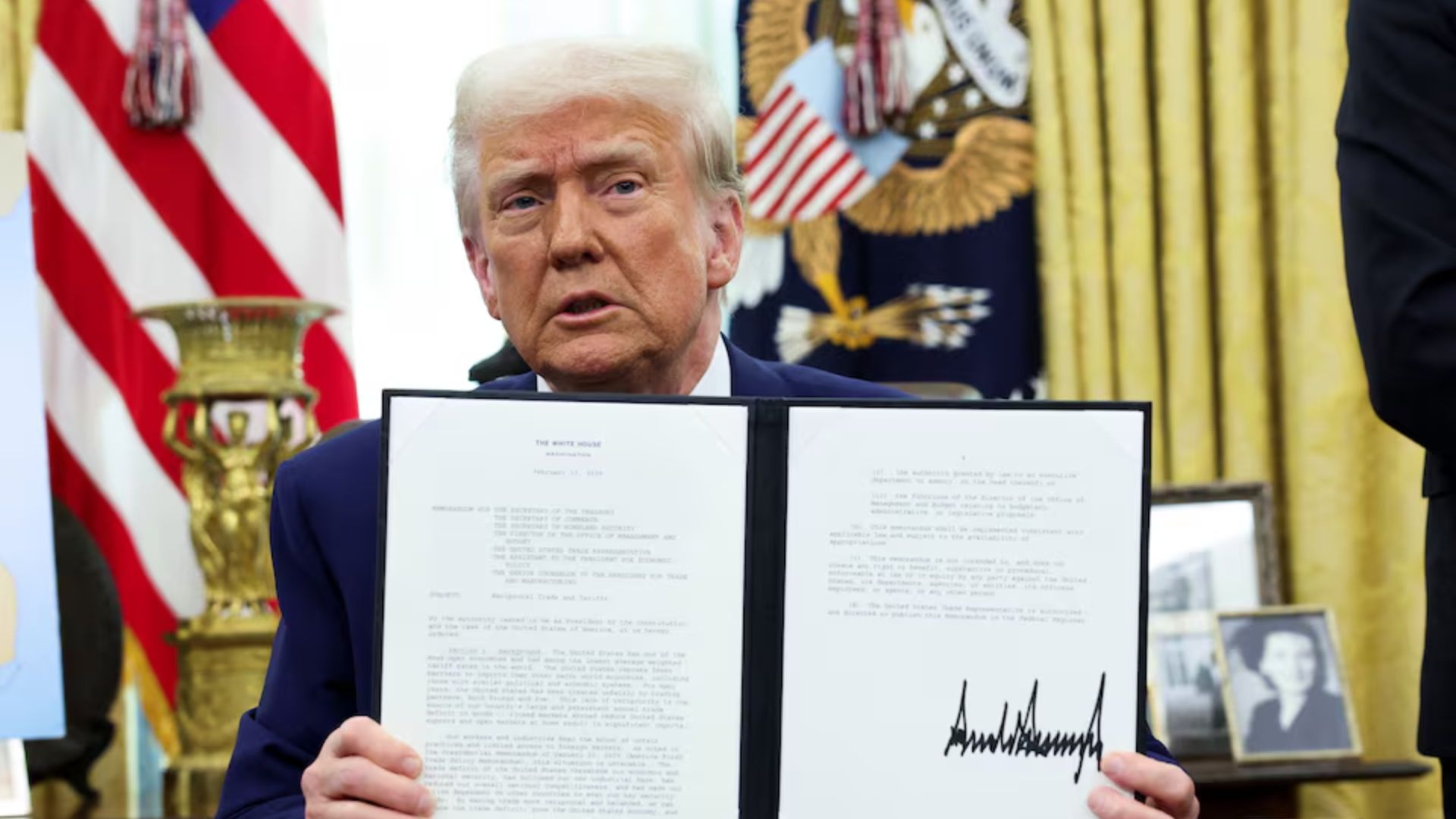Summary
- Trump announced 25% tariffs on autos, components on Wednesday
- US Commerce probe in 2019 found imports harmed national security
- US imported $474 billion of autos and parts in 2024
WASHINGTON, (Reuters) – U.S. President Donald Trump on Wednesday announced25% tariffs on auto and auto parts after concluding that automotive imports continue to threaten the country’s industrial base and national security.
Trump’s proclamation argued that those threats, first identified during an investigation concluded in February 2019 – during his first term in office – were still relevant and had in fact escalated after the COVID pandemic.
Negotiations and trade agreements with South Korea and Canada and Mexico had not shifted the balance of trade sufficiently, and foreign automotive industries had grown substantially, bolstered by “unfair subsidies and aggressive industrial policies,” Trump said in his proclamation.
“Today, only about half of the vehicles sold in the United States are manufactured domestically, a decline that jeopardizes our domestic industrial base and national security,” the proclamation said. It noted that the U.S. share of global auto production had remained stagnant since the 2019 report, and that U.S. jobs in the industry had also not increased.
Americans bought about 16 million cars, sport utility vehicles and light trucks in 2024, and about half were imported, with the average domestic content of the other half estimated to reach 40% to 50%, the White House said in a fact sheet.
Trump has long promised higher duties on imported cars, a frequent theme in his remarks. The tariffs are due to take effect on April 3, a day after his separate, April 2 plans for reciprocal tariffs aimed at the countries responsible for the bulk of the U.S. trade deficit.
The 25% auto tariff rate – the level floated by Trump in February – sent shockwaves through a global industry that is already reeling from uncertainty caused by Trump’s rapid-fire tariff threats and occasional reversals.
Tariffs could drive up the cost of a car by thousands of dollars, hitting new vehicle sales and resulting in job losses, because of the U.S. auto industry’s heavy reliance on imported parts, according to the Center for Automotive Research.
But the move was welcomed by labor unions, including the United Auto Workers, which said it marked a “long overdue shift away from a harmful economic framework that has devastated the working class and driven a race to the bottom across borders.” The U.S. imported $474 billion worth of automotive products in 2024, including passenger cars worth $220 billion. Mexico, Japan, South Korea, Canada and Germany, all close U.S. allies, were the biggest suppliers.
Trump told reporters the auto tariffs would remain in effect throughout his term. The White House said a 2023 study found that tariffs imposed on more than $300 billion of imports during his first term reduced imports from China and bolstered domestic production, with “very minor effects on prices.”
Trump has long railed against what he calls the unfair treatment of U.S. automotive exports in foreign markets, often singling out the European Union, which collects a 10% duty on vehicle imports, four times the U.S. passenger car tariff rate of 2.5%. The U.S., though, collects a 25% tariff on pickup trucks from countries other than Mexico and Canada, which makes the vehicles highly profitable for Detroit automakers.
GROUNDWORK LAID FOR QUICK ACTION
Trump’s action is based on an investigation completed by the Commerce Department in 2019 under Section 232 of the Trade Expansion Act of 1962, which found that “excessive” foreign auto imports weakened the domestic industrial base and could impair national security.
It said the U.S. defense industrial base depends on U.S. automakers for the development of high-tech products and capabilities for military vehicles, and that lost market share eroded investments in cutting-edge new technologies.
That report proposed three possible remedies: negotiations with other countries, tariffs of up to 25% on autos and certain components, and tariffs of up to 35% on light utility vehicles.
Trump at the time threatened 25% car tariffs, but ultimately took no action, allowing the tariff authority from that probe to expire. Wednesday’s proclamation reinstates the findings, based on a report by Commerce Secretary Howard Lutnick that the problems persisted and threatened to impair U.S. security.
Ryan Majerus, a former Commerce Department official now with law firm King & Spalding, said the completed Section 232 autos investigation report provided a good basis for the tariffs.
Using it allowed Trump’s team to “implement the report quickly and lean on the successful litigation history under Section 232 from the first term,” he said.
Beth Baltzan, who served as a senior adviser to former U.S. Trade Representative Katherine Tai during the Biden administration, said a higher tariff rate would encourage people making cars in North America to choose more U.S. parts to benefit from the tariff-free U.S.-Mexico-Canada trade agreement.
The current rate of 2.5% was so low that producers simply paid it, while the higher 25% tariff on trucks had worked to keep parts sourced in North America, she said. “That tariff wall is actually what drives the sourcing patterns in North America that the pro-American manufacturing crowd wants.”
If Trump’s goal was to have countries lower their tariffs on a reciprocal basis, that assumed the U.S. would export more cars, a questionable assumption given current trade flows and “how lucrative the North American market is,” she said.
Reporting by Andrea Shalal and David Lawder; additional reporting by David Shepardson; Editing by Dan Burns, Paul Simao and Leslie Adler











